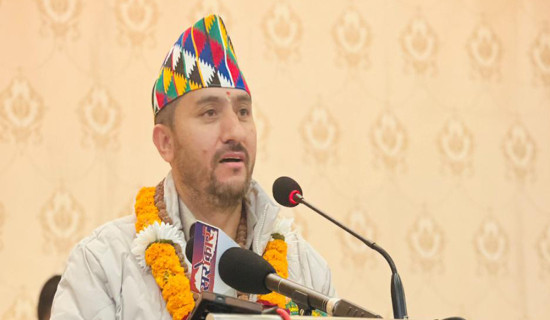- Sunday, 21 December 2025
Fast-track Urban HIV Response
As cities around the globe continue to adapt urbanisation, health status of urban populations is becoming more complex and challenging in the recent years. In order to address the growing public health challenges in urban environments, it is necessary to ensure a collaborative and interdisciplinary approach among a range of stakeholders and promote urban health at all levels. Obviously, the future of health and development is being shaped by cities and urban areas. By 2030, an estimated 60 per cent of the global population will live in cities. More than 90 per cent of urban population growth will take place in low- and middle-income countries.
Undoubtedly, urbanisation is one of the leading global trends of the 21st century that has a significant impact on health. Over the years, inadequate housing and transport, poor sanitation and waste management, climate change, and air quality have been the key challenges for sustainable urban development. The rising non-communicable disease burden, the persistent threat of infectious disease outbreaks and an increased risk of violence and injuries are key public health concerns in urban areas.
Broad determinants
Therefore, achieving significant advancement in urban health is essential to global health and achieving the Sustainable Development Goals (SDGs). There are increasing evidences for actions needed to exclusively address the broad determinants of urban health and health equity. Among many others, HIV is one of the challenges for sustainable human development. The risk and vulnerability to HIV is often higher in urban compared to rural areas due to urban dynamics such as migration, unemployment, social and economic inequalities, violence and discrimination, particularly affecting poor and vulnerable communities in the urban settings.
Global evidences suggest that key and vulnerable populations mostly reside in urban areas and often lack access to comprehensive HIV prevention, testing and treatment services. In some developing countries, the provisions of comprehensive HIV services are constrained by poor health systems, pandemics like COVID-19 and other natural disasters. However, local governments can drive innovation, unite diverse partners, develop locally appropriate policies and strategies to step up their efforts for ensuring inclusive health services. In this context, new cities are more likely to offer important opportunities and have inherent advantages in responding HIV, Tuberculosis and other communicable diseases.
More importantly, it is important to note that cities have been leading the HIV response through community advocacy, scaling up prevention, testing, treatment and care services, and adopting innovative approaches to reduce HIV transmission and AIDS related deaths, and to address the barriers that prevent service access. Moving forward, urban HIV responses will be instrumental in achieving the SDGs and ending the AIDS epidemic by 2030. Again, interestingly, global and regional strategies have been major landmarks in advancing the fast-track of HIV responses at the community level. For example, the Global AIDS Strategy (2021-2026) has also included urban settings as a cross-cutting issue for effective and sustained HIV responses that are mainly community-led and people-centred services. In all urban settings, the global strategy importantly highlights the emerging role of cities and human settlements to address a range of public health challenges such as HIV, TB and other diseases in a more coordinated and inclusive approach. Fast-tracking urban HIV response needs to address structural inequalities, social exclusion, and protecting the health rights of populations who are poor and vulnerable in the families and communities.
At the regional level, most of the cities in South-East Asia have been scaling up the community-based interventions during the COVID-19 pandemic to ensure that HIV treatment and prevention services uninterrupted by the pandemic. These interventions have been effective to promote community-led response, accelerate continued progress and ensure key and vulnerable populations have easy access to comprehensive HIV services.
More importantly, the key populations and their networks are at the forefront of the urban HIV response in many countries. They are encouraging and advocating the inclusion of urban focused approaches in the national HIV strategic plans. There are increasing trends of leveraging existing resources to strengthen HIV prevention, testing, treatment and care in the urban health facilities with a focus on reducing socio-economic and cultural barriers as experienced by key and vulnerable populations.
Nepal’s HIV Strategic Plan (2021-2026) has importantly underscored the critical needs for implementing innovative community-led responses across the country. While it is evident that incidence and prevalence of HIV among key populations have been more visible in the urban areas, there are crucial needs to further strengthen and scale up the HIV prevention interventions among urban populations who are at high risks.
Development partners
Over the years, it is important to note that key development partners such as USAID, WHO, UNAIDS, FHI 360, the Global Fund and few others have been providing technical assistance to the National Centre for AIDS and STD Control (NCASC) and civil society for achieving the goal, objectives and targets of national HIV programmes across the country. Despite significant progress, fast-tracking urban HIV response should be one of the key strategic priorities for multi-sector actions.
To sum up, a participatory review of HIV responses is vital to understand the scale and urgency of the interventions and address the existing coverage gaps and implementation challenges in the urban settings. In the federal context, fast-tracking urban HIV response demands strong political will, leadership, data-driven implementation planning, and meaningful engagement of key young populations for equity-based interventions.
(PhD in global health, Bhandari writes on health and development issues)
















